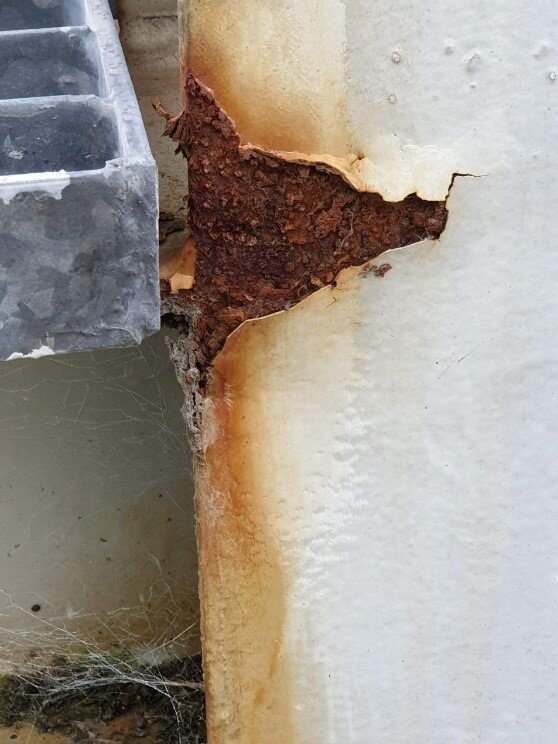5 Types of Corrosion to look out for that can affect Structural Integrity of Bridges
5 Types of Corrosion to look out for that can affect Structural Integrity of Bridges
Integrity of bridges is imperative to the infrastructure of New Zealand, yet apart from doing annual inspections, the care of them is often neglected - until they get to replacement stage. Its strange, but organisations are often able to find millions of dollars for bridge replacement, but they couldn’t find the $100k 5 years back to prevent it corroding into this state!
A key point about corrosion in steel work is knowing what type of corrosion you’re dealing with. For instance a large area of plate steel with widespread general rusting can appear in a bad way, however it’s often very minor and simple to remedy. Conversely, a large steel component with almost no rust – yet one small area of galvanic corrosion can be structurally damaging.
This article explains the 5 main types of corrosion in brief:
Galvanic Corrosion
1.Galvanic Corrosion- this is caused by two dissimilar metals connecting. An example may be a stainless bolt going through a steel beam. The two metals are obviously different, and the least noble of them (most corrosive) lasts ok while and the more noble metal corrodes. This is often the most serious type of corrosion and the structure can deteriorate very rapidly.
What to do about it? Small localised areas can typically be sandblasted back to clean metal and treated prior to recoating. However extensive galvanic corrosion of structural elements will often require and engineer to assess the structural integrity and put forward a better design to prevent reoccurrence.
Localised Corrosion
2.Localised Corrosion may occur anywhere on a steel surface, and generally with no obvious cause. Examples of the causes of localized corrosion are scratches in paintwork (from another machine for instance), or where modifications have been made to the structure without correct recoating procedures.
These can often be fixed by sandblasting, having zinc applied and being recoated. Being so small they are deceptive though, and often pass muster when they shouldn’t, often leading to further more serious damage.
General Corrosion
3.General Corrosion is uniform loss of material over a surface. Whilst it looks in poor condition most often it isn't actually affecting the structural component of the steel. The larger the rusty area the better the condition of the steel typically.
Generally these areas are simple to fix and often don’t require sandblasting, and can fixed in good time before it can become something more serious.
Pitting Corrosion
4.Pitting Corrosion this is small corrosion craters in the steel where corrosion has been active for some time already. It’s often seen on exposed pipework and unprotected steel structures, and is commonly found on bridge structures. The pitting can be almost unnoticeable but in fact can fully penetrate a steel flange of metal with a relatively small amount of metal loss, meaning the structural integrity could be lost with only a small amount of surface damage.
This can be looked after with coating, but often as the pitting gets too deep and creates holes in the steel, this will need to be replaced to an engineers specification to bring the structural integrity back up to standard.
Crevice Corrosion
5.Crevice Corrosion occurs on a metal surface that is shielded from full exposure to the environment because of the close proximity of another material that forms a narrow gap between them.
Steel beams that are joined need to be monitored, usually crevice corrosion can be minimised with wax sealers or similar.
All of these can be prevented, and the longevity of bridges can be extended for many years through regular maintenance.
Protective coating systems represent the most common and extensively used corrosion protection. This forms a barrier between the environment and the metal beneath, this is where you may here the term barrier protection. This is the best and most effective form of protection from corrosion for structures around water, because it isolates the metal from the environment, preserving the metal.
However, the protection afforded by protective coatings can be greatly influenced by:
Breaks in the protective coating film
The type of protective coating system
Protective coating thickness
The nature of the electrolyte
Presence of Mill and other scales.
Because of these factors, make sure your coatings applicator is experienced and has an extensive knowledge on the preparation and application of the right product when protecting your bridge from further corrosion.
















